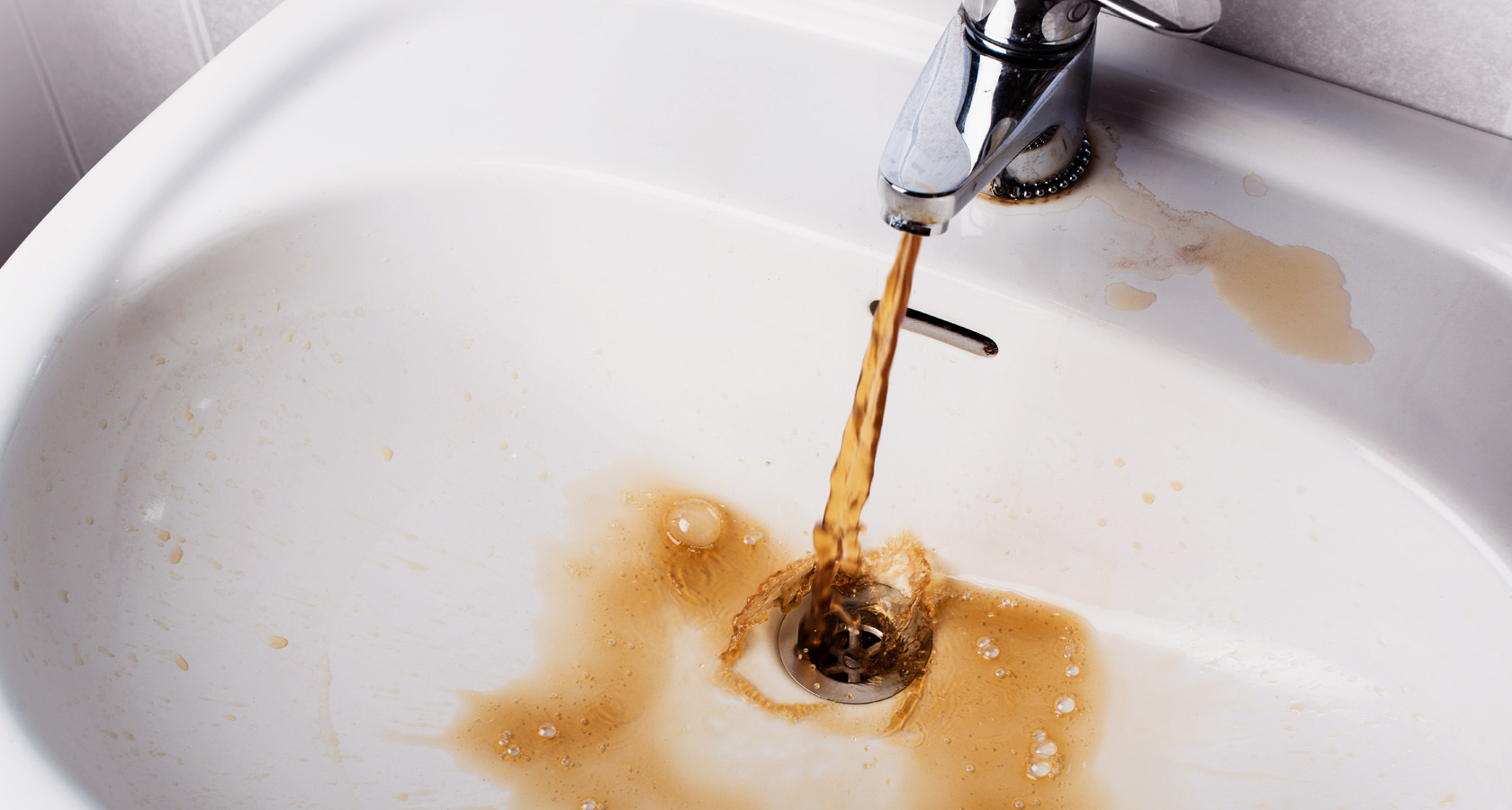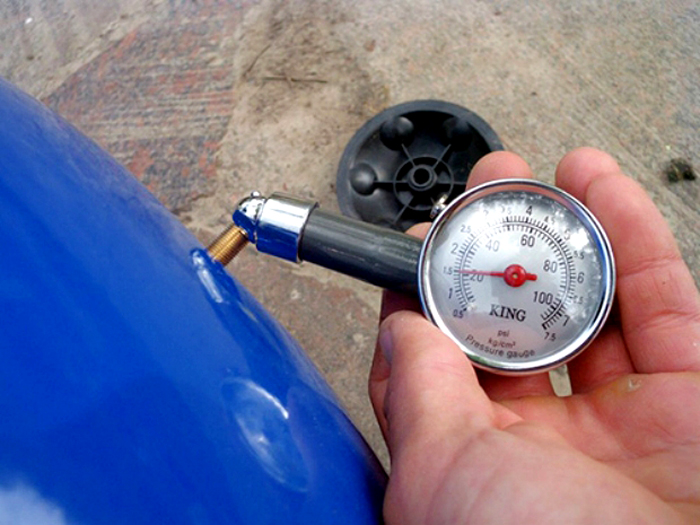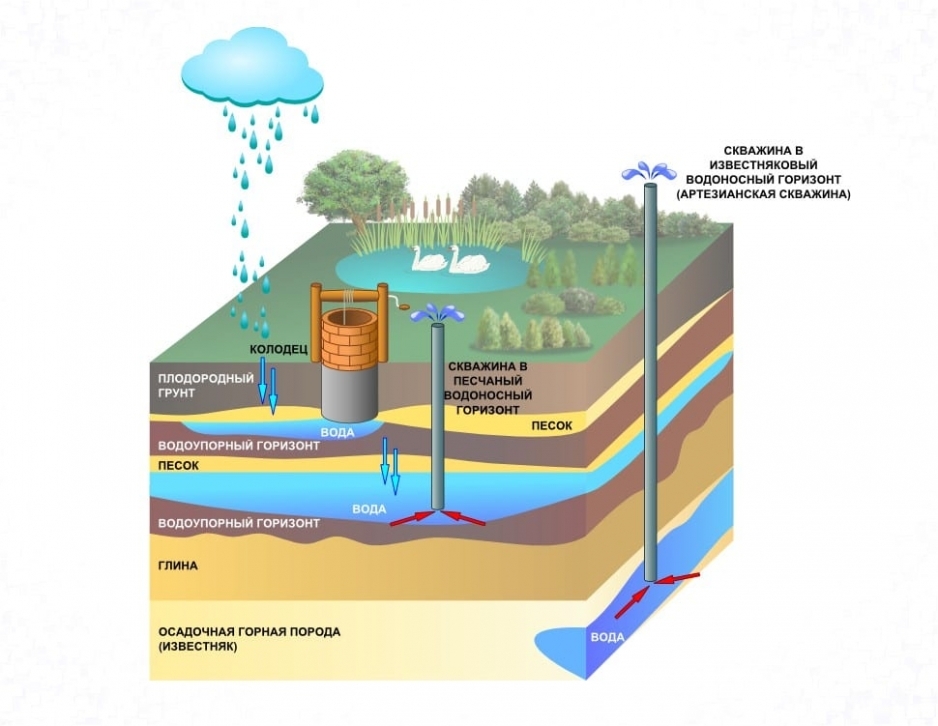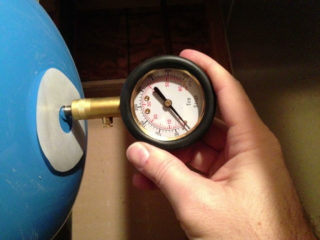An autonomous source on the site is a guarantee of a comfortable stay in the house. More often, craftsmen prefer to drill a well or dig a well. With the right work, it is possible to achieve a relatively clean aquifer. The liquid from it visually appears to be drinkable. But it also happens that the water from the well turns yellow in the air after it is taken. There are several reasons for this. You need to fix the problem depending on the situation.
Causes of yellowing of water

If the water from the well turns yellow after several hours from the moment it rises or literally immediately, the following factors play the main role in this process:
- The presence of ferrous (dissolved) iron in the liquid. In this state, the element is not visible to the human eye. But when oxidized (combining it with oxygen), it changes its structure to trivalent, precipitates and takes on a visible form. Particles of this iron can be filtered out. The oxidation process of Fe2 is inevitable when lifting well water. If the liquid collected in the glass turned yellow over time, and small grains of iron settled to the bottom, it means that it is enriched with a chemical element.
- Casing corrosion. Here iron (rust) is present in the liquid in a trivalent form and is immediately visible to humans.
- Manganese-rich water. Here, the same processes occur as when enriching a resource with iron. Manganese water is unusable. In addition, a liquid with an admixture of Mn changes its color when boiled or heated. If this happened, we are talking about manganese.
- Admixture of clay or sand. If the bottom filter is faulty or the casing is depressurized, fine soil fraction oozes into it. Such impurities in the form of clay or sand change the color of the liquid to yellow. The intensity of the shade and turbidity depends on the concentration of the mud in the water.
- Humic acid or tannin. If a well is drilled on peaty soils, such impurities are not uncommon. The resource is unusable.
- Hydrogen sulfide. In this case, when boiling, the water becomes covered with a cloudy film and smells extremely unpleasant even when it rises.
Poor quality pumping or filtering equipment can be an additional reason for the yellow tint of the liquid.
Possibility of using yellow water

If water from a well turns yellow when heated, boiled or simply in the air, it is strictly forbidden to use it for food or drinking. This threatens the following phenomena:
- food poisoning;
- stool disorders, vomiting;
- allergic reactions;
- bacterial poisoning.
For household appliances, the use of such a liquid threatens the following:
- Failure of the working elements of the washing machine or dishwasher. This is due to the accumulation of a large sediment of sand, clay, iron on the internal parts of the equipment.
- Damage to the boiler and heating pipes.
- Failure of pumping equipment that is not suitable for pumping contaminated media.
- Breakdown of filtering installations in the house.
- Malfunction of plumbing equipment over time.
If you use such water for irrigation, then under the influence of manganese, the plants will burn. Iron, sand and clay will not affect the yield in the best way and will greatly damage the fruit.
Washing laundry in contaminated water leads to yellowing of white items.It is extremely difficult to remove the pigment afterwards.
It is allowed to use dirty yellow liquid from a well / well only for washing cars, household equipment or stoves in the yard. However, unsightly stains will still remind you that it is time to clean the well resource, to take at least some measures to eliminate the problem.
How to solve the problem
You can correct the situation if you find out the root cause that led to the formation of a yellow liquid.
Iron
When it comes to enriching the Fe2 resource, you need to take care of a high-quality iron remover filter. It has a special charge inside, which contributes to the oxidation of particles of a divalent impurity. Reduced to a different, suspended state, the iron settles on the walls of the filter.
In order for the cleaning system to work properly, you need to regularly change the load and rinse the installation flask with running clean liquid.
Clay or sand
For a clay bottom, it is advisable to install a bag-type filter. It prevents impurities from entering the mine well.
For a sandy bottom, a new strainer must be installed. It is advisable to change the bottom backfill for fine-grained pebbles.
Hydrogen sulfide
To eliminate the problem, you need to clean the bottom of the source well, pump it over, rinse it with a powerful pump and replace the bottom filling. Here you will have to install an aerator, which will enrich the liquid with oxygen. When it interacts with the molecules of the fetid gas, the latter are oxidized and volatilized into the air. If this is not done, such water can lead to pulmonary edema, paralysis, and serious toxic poisoning.
Humic acid or tannin
A similar problem is typical for peaty soils. Therefore, when arranging the bottom of the source, you must first take care of a good backfill in the form of pebbles of different fractions. The lower levels are larger stones. The upper ones are smaller.
However, even pebble backfill does not insure against tannin or humic acid impurities. Therefore, you need to take care of multi-stage resource filtering. One of the first layers of the cleaning system should be a carbon cartridge. Behind it is a membrane one.
It is recommended to install a reverse osmosis unit under the sink in the house to completely eliminate yellowness and any harmful impurities from the liquid.
Only high-quality water purification leads it to a normal state, regulated by sanitary standards. Drinking unpeeled is strictly prohibited.










